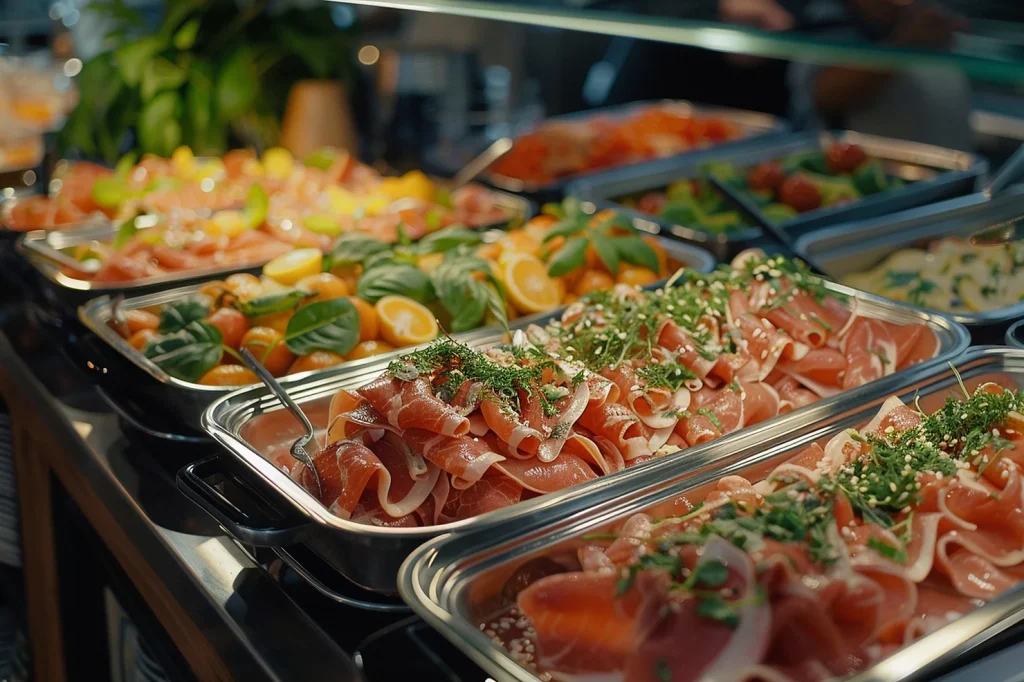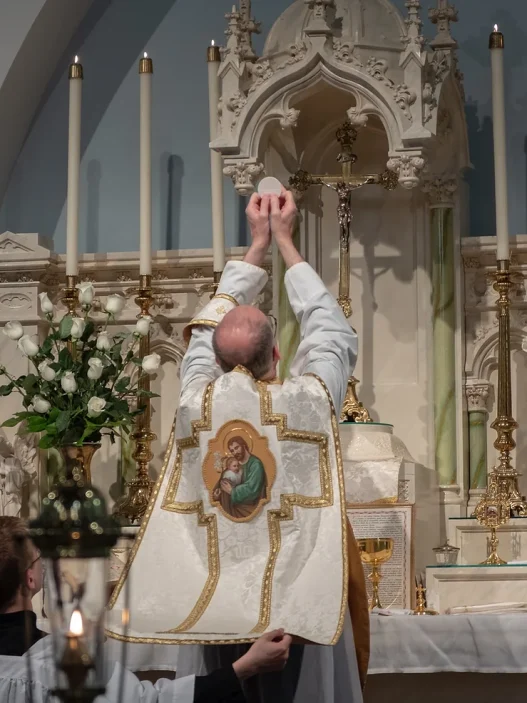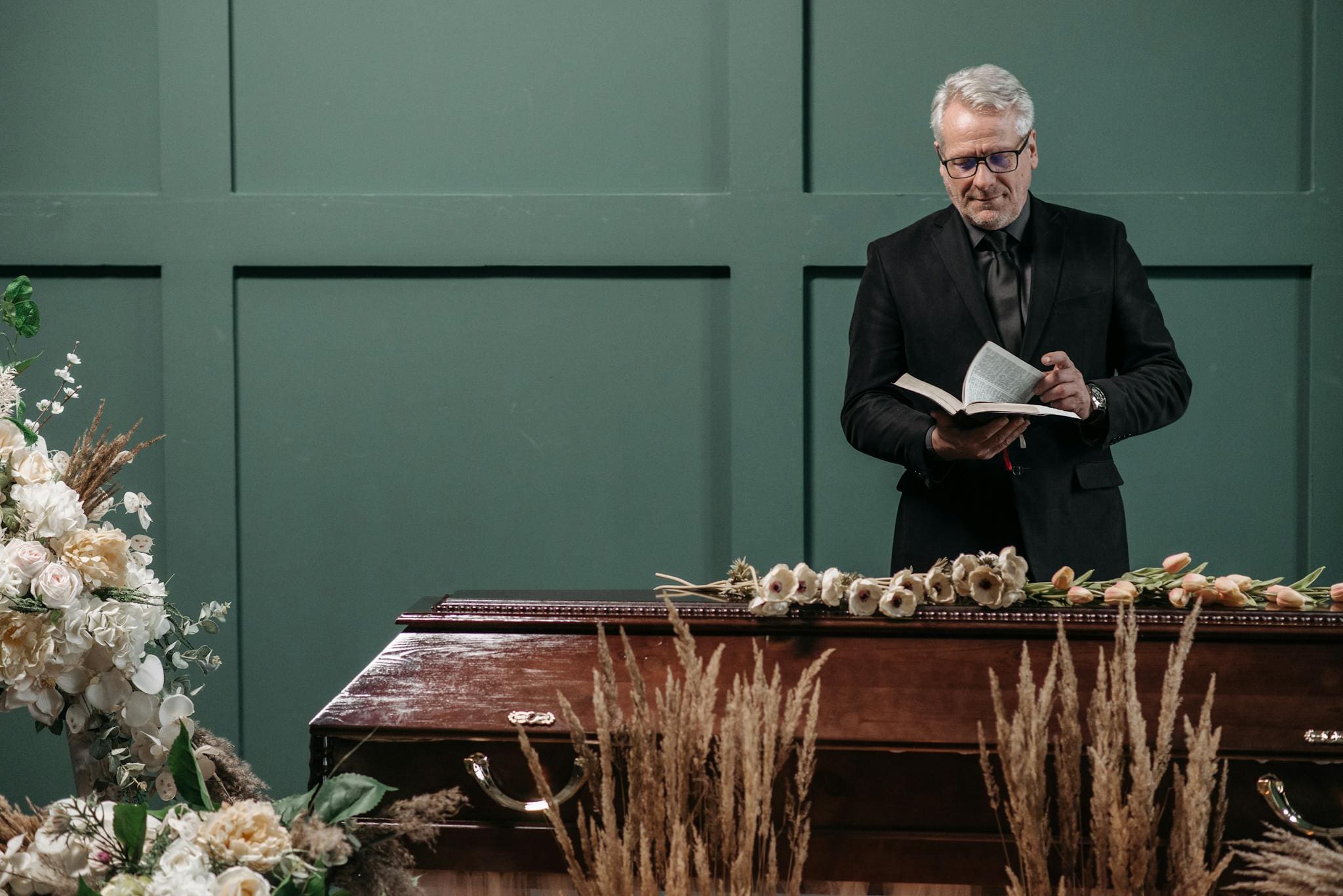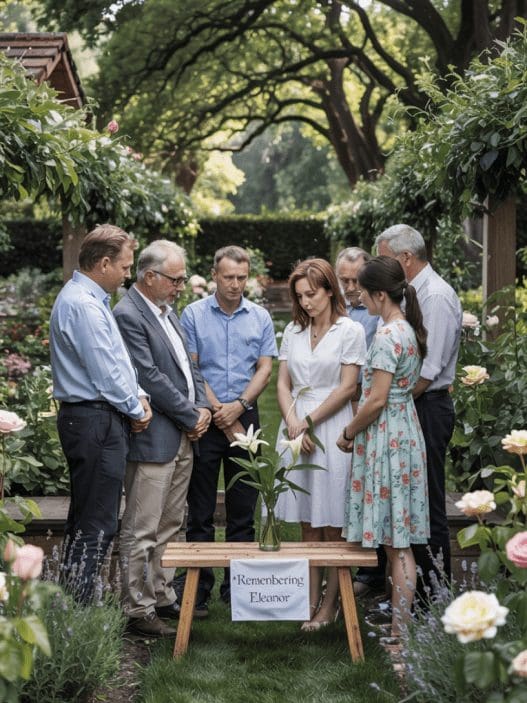Funeral services are deeply personal events meant to honor and remember the deceased. However, they don’t always conclude with the burial or memorial ceremony. Many families choose to host a gathering afterward, such as a funeral repast or a reception. Although these two terms are often used interchangeably, they have different purposes, structures, and tones. It’s important to understand these differences to ensure the right event is chosen for the family’s needs and the wishes of the deceased are respected.
In this comprehensive guide, we’ll explain the distinctions between a funeral repast and a funeral reception, explore cultural nuances, and provide actionable advice on how to plan and organize these post-funeral gatherings.
Table of Contents
Key Differences Between a Funeral Repast and a Funeral Reception
Planning a Funeral Repast: What to Consider
Organizing a Funeral Reception: Tips for Success
Cultural and Religious Considerations
What is a Funeral Repast?
A funeral repast is traditionally a meal held after a funeral service, often seen as a more intimate and personal gathering. It allows close family members and friends to come together and share a meal while reflecting on the deceased’s life. The repast offers a private space where emotions can flow freely, and where attendees can find comfort in each other’s company.
Historically, the repast has strong ties to religious traditions. It is not just a time for eating but also for spiritual and emotional healing. The focus of a repast is less on formalities and more on providing nourishment for the mourners, both physically and emotionally.
The Origins of the Funeral Repast
The concept of a post-funeral meal has existed for centuries and is rooted in religious and cultural practices around the world. In many traditions, food plays an integral role in honoring the dead and supporting the living during their grieving process. The word “repast” itself comes from the Latin repassare, meaning “to pass again,” reflecting the cyclical nature of life and death.
In various Christian denominations, the repast follows the funeral service and burial, symbolizing fellowship and the continuation of life. It also provides an opportunity for attendees to comfort the family of the deceased and share memories in a more relaxed setting than the funeral service itself.
Common Characteristics of a Funeral Repast
A funeral repast typically includes several key elements that distinguish it from other post-funeral gatherings. These include:
- Location: Funeral repasts are often held in private settings, such as the home of the deceased’s family or a close relative’s house. In some cases, the repast may be hosted at a small restaurant or rented venue, but the atmosphere remains intimate and personal.
- Guest List: Only immediate family members and close friends of the deceased are usually invited. This keeps the gathering small, allowing those closest to the deceased to share in a private and reflective moment.
- Food: The meal served at a repast is typically buffet-style and includes comfort foods that are easy to prepare and serve. Dishes like casseroles, salads, sandwiches, and baked goods are common, as they can be easily made by family members or catered in larger quantities. In many cultures, the food served is part of longstanding traditions.
- Religious Elements: In some traditions, the repast may include prayers, blessings, or other religious rituals. For example, in Catholic traditions, the repast is seen as a continuation of the funeral Mass, reinforcing the belief in the afterlife and offering spiritual support to the grieving family.
The Emotional Significance of a Funeral Repast
A funeral repast is more than just a meal—it serves as a moment of connection for those who are mourning. Sharing food and memories can be comforting, especially when dealing with the emotional strain of losing a loved one. For the family of the deceased, the repast offers a private space to grieve, away from the formalities of the funeral service.
The act of breaking bread together has long been associated with community, bonding, and healing. By providing sustenance in the form of food, mourners can care for their bodies while also caring for their emotional well-being. This is especially important after a long day of funeral services, which can be physically and emotionally draining.
What is a Funeral Reception?

In contrast to a funeral repast, a funeral reception is typically a larger, more open gathering that follows the funeral service. While it still serves to honor the deceased, a reception tends to be more social and less formal. A wider circle of attendees is usually invited, including distant relatives, friends, neighbors, and colleagues of the deceased.
The reception offers a more casual setting where guests can come and go as they please, offering condolences to the family and sharing stories about the deceased. Although still respectful, funeral receptions can have a more celebratory tone, focusing on the deceased’s life and achievements.
The Purpose of a Funeral Reception
The primary purpose of a funeral reception is to provide a space for everyone who knew the deceased to come together and pay their respects. Unlike the more intimate and private nature of a repast, a reception is open to a broader range of attendees, which may include friends of the family, coworkers, and community members.
Receptions often act as a final opportunity for mourners to express their condolences and offer support to the family, particularly if they were not able to attend the funeral service itself. They also allow for a more informal and relaxed environment, where guests can share fond memories and anecdotes about the deceased.
Common Characteristics of a Funeral Reception
Funeral receptions are larger and more flexible than repasts. Some of the defining features of a reception include:
- Location: Funeral receptions are often held in larger venues, such as community centers, banquet halls, or even the reception rooms of funeral homes. These spaces can accommodate a larger number of guests and offer a more relaxed, social environment.
- Attendees: Unlike a repast, which is limited to close family and friends, a reception is open to a broader group of people. This may include distant relatives, coworkers, friends of the family, and other acquaintances of the deceased.
- Food and Beverages: The food at a funeral reception is typically more casual than that of a repast. Instead of a full meal, light refreshments, appetizers, or finger foods are usually served. These may be catered by a professional service or provided potluck-style by friends and family members.
- Tone: While still respectful, the atmosphere at a funeral reception can be more celebratory. Guests are encouraged to share stories and memories of the deceased, which can bring a sense of joy and appreciation for the life that was lived.
The Emotional Tone of a Funeral Reception
Because a funeral reception is more open and social, the emotional tone is often lighter than that of a repast. While grief is still present, the focus of the reception is on celebrating the deceased’s life rather than mourning their death. For many, this shift in tone provides a sense of closure and comfort, as it allows attendees to remember the positive aspects of the deceased’s life.
Funeral receptions also provide a valuable opportunity for people to reconnect with distant relatives and friends they may not have seen in a long time. These social connections can offer comfort and support during a difficult time, helping to ease the burden of grief.
Key Differences Between a Funeral Repast and a Funeral Reception
Although both a funeral repast and a funeral reception serve the purpose of honoring the deceased and bringing together mourners, there are several important distinctions between the two events. Understanding these differences can help families choose the appropriate gathering for their needs and preferences.
| Aspect | Funeral Repast | Funeral Reception |
| Size of Gathering | Smaller, intimate | Larger, open to all mourners |
| Location | Private home, small venue | Banquet halls, churches, or community centers |
| Attendees | Immediate family and close friends | Extended family, friends, and acquaintances |
| Atmosphere | Private, reflective | Social, sometimes celebratory |
| Food | Full meals (buffet-style) | Light refreshments, finger foods |
| Religious/Traditional Focus | Stronger cultural or religious roots | Often less focused on tradition |
The funeral repast is a more personal and intimate affair, attended by close family and friends, while the reception is a larger, more open gathering where anyone who knew the deceased is welcome. This difference in scale also affects the atmosphere, with the repast being more reflective and somber, while the reception often takes on a more celebratory tone.
Planning a Funeral Repast: What to Consider
Organizing a funeral repast requires careful planning and consideration of the family’s needs, traditions, and preferences. Below are some key factors to keep in mind when planning a repast:
1. Venue Selection
The venue for a funeral repast should be chosen based on the size of the gathering and the desired atmosphere. Common venues include:
- Family Home: Many families prefer to host the repast in the home of the deceased or a close family member. This creates a warm and familiar environment, making it easier for guests to feel comfortable.
- Restaurant: For those who want to avoid the logistical challenges of hosting at home, a private room in a restaurant can offer a more convenient option. Restaurants can provide catering services and allow the family to focus on their emotional needs rather than the practicalities of hosting.
- Community Center or Hall: In some cases, families may choose to rent a small community hall or banquet room for the repast. This is especially common if the family home is too small to accommodate all attendees.
2. Guest List and Invitations
The guest list for a funeral repast is typically kept small, with invitations extended only to immediate family members and close friends. Invitations are often sent informally, either through word of mouth, phone calls, or private messages. Some families may choose to announce the repast during the funeral service, allowing guests to decide whether they would like to attend.
3. Catering and Food Choices
The food served at a repast should be comforting and easy to prepare. Many families opt for buffet-style meals that include dishes such as:
- Casseroles: These hearty, make-ahead dishes are perfect for feeding a crowd and can be easily prepared by family members or friends.
- Salads: Simple salads, such as potato salad or coleslaw, are often included in repast menus, as they can be prepared in advance and served cold.
- Desserts: Baked goods, such as cakes, cookies, and pies, are common at repasts and offer a sweet way to conclude the meal.
4. Incorporating Religious or Cultural Elements
For many families, the repast is a time to incorporate religious or cultural traditions. This may include saying prayers or blessings before the meal, reciting religious texts, or following specific dietary guidelines. In Catholic and Christian traditions, the repast is often seen as a continuation of the funeral Mass, with the meal representing a communal act of healing and support.
Some families may also choose to play soft background music or display photos and mementos of the deceased during the repast, creating a more personal and reflective atmosphere.
Organizing a Funeral Reception: Tips for Success
Funeral receptions, due to their larger size and more social nature, require different planning considerations than a repast. Below are some tips for organizing a successful funeral reception:
1. Venue Selection
Because a funeral reception is typically larger than a repast, choosing the right venue is crucial. Common venues for receptions include:
- Community Centers: These large, flexible spaces can accommodate a large number of guests and offer a blank slate for families to customize the event.
- Banquet Halls: Many families choose to rent a banquet hall for the reception, especially if they expect a large number of attendees.
- Funeral Home Reception Rooms: Some funeral homes offer reception rooms that can be rented for post-service gatherings. These rooms are often conveniently located, making it easy for guests to attend both the funeral service and reception.
2. Invitations and Guest List
Funeral receptions are usually open to a broader range of attendees than a repast. The guest list may include extended family members, friends, colleagues, and acquaintances of the deceased. Invitations are often made more informally, either through announcements at the funeral service or through online obituary pages.
3. Food and Drink
The food at a funeral reception is typically lighter and more casual than at a repast. Common options include:
- Finger Foods: Small, easy-to-eat items like sandwiches, fruit platters, and cheese trays are popular choices for funeral receptions.
- Appetizers: Many families opt for a selection of appetizers, such as meatballs, chicken wings, or vegetable trays.
- Desserts: Sweet treats like cookies, brownies, and cupcakes are often included in reception menus.
Some families may also choose to serve alcohol at the reception, particularly if the event is more celebratory in nature. However, this decision should be made based on the preferences of the family and cultural or religious considerations.
4. Tone and Atmosphere
The tone of a funeral reception can vary widely depending on the preferences of the family and the personality of the deceased. While some families prefer to keep the event somber and reflective, others may choose to adopt a more celebratory tone, focusing on the deceased’s accomplishments and joyful moments.
To set the appropriate tone, families may choose to:
- Display Photos: Create a photo display or slideshow featuring images of the deceased throughout their life.
- Play Music: Soft background music or songs that were meaningful to the deceased can add a personal touch to the reception.
- Encourage Guests to Share Stories: Invite guests to share memories or anecdotes about the deceased, creating a more interactive and heartfelt atmosphere.
Cultural and Religious Considerations
The customs surrounding funeral repasts and receptions vary significantly across different cultures and religious traditions. Below are some examples of how various cultural and religious groups approach post-funeral gatherings:
Catholic Traditions
In Catholic funerals, the repast, also known as a mercy meal, is an important part of the mourning process. After the burial, family and close friends gather to share a meal, which is often seen as a continuation of the funeral Mass. The repast serves as a way to offer comfort and support to the family while reinforcing the Catholic belief in eternal life.
Catholic repasts are often held in the family home or at a nearby restaurant. The food served is usually simple and comforting, and the event may include prayers or blessings.
Jewish Traditions
In Jewish funerals, the meal following the funeral is called the Seudat Havra’ah, or meal of consolation. This meal marks the end of the funeral and is an important part of the mourning process. The meal is typically held in the home of the deceased’s family and includes traditional Jewish foods such as eggs, bread, and lentils, which symbolize the cycle of life.
The meal of consolation is intended to provide comfort to the mourners and help them begin the process of healing. It is a time for family and close friends to come together in a private and intimate setting.
Hindu Traditions
In Hindu funerals, the meal following the funeral is known as the Pinda Pradana or Shraddha ceremony. This meal is part of a series of rituals that guide the deceased’s soul on its journey to the afterlife. The meal is typically vegetarian and may include rice, lentils, and other symbolic foods.
The funeral meal is an important part of the Hindu mourning process, as it provides nourishment to both the living and the deceased’s spirit. The family may also offer food to the poor as a way of honoring the deceased’s memory.
Muslim Traditions
In Islamic funerals, the post-funeral gathering is called the Azaa. While there is no formal requirement for a meal after a funeral in Islam, many families choose to offer food to guests as a form of charity and hospitality. The meal is often simple and includes dishes such as rice, meat, and bread.
The Azaa is a time for family and friends to come together in support of the grieving family. Prayers and recitations from the Quran may be included as part of the gathering.
Conclusion
Both a funeral repast and a funeral reception serve important roles in the grieving process, offering opportunities for connection, support, and reflection. While the two events share similarities, they differ in scale, tone, and purpose. The repast is a more intimate and private gathering, while the reception is larger and more social.
By understanding the distinctions between these two types of gatherings, families can choose the option that best honors their loved one and provides comfort to those mourning. Whether it’s a quiet meal with close family or a large reception open to the community, these post-funeral gatherings offer a chance to celebrate the life of the deceased and find solace in the company of others.



















